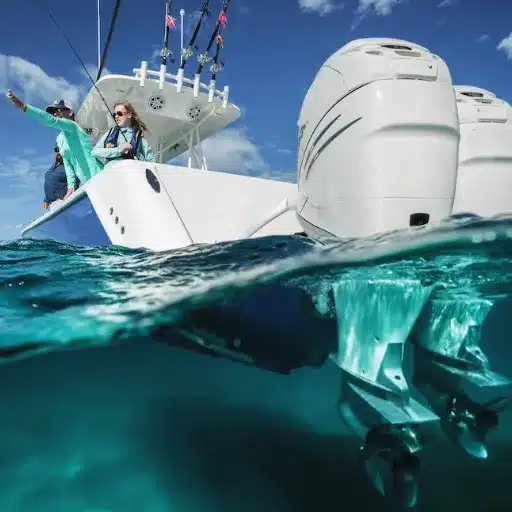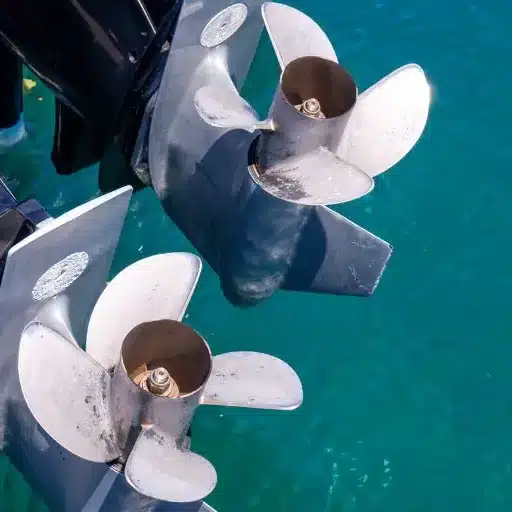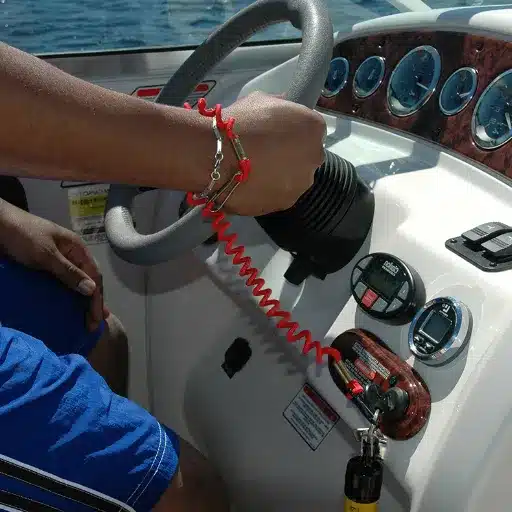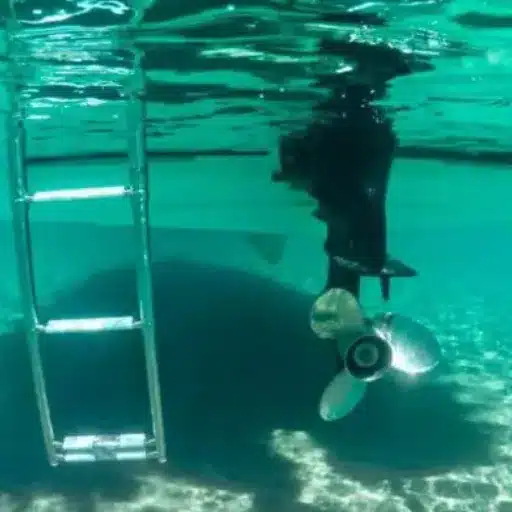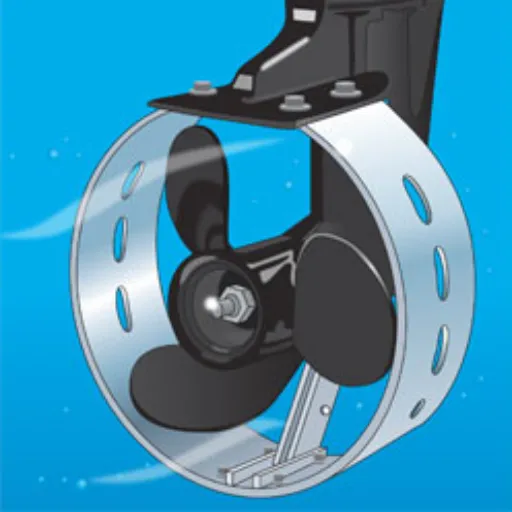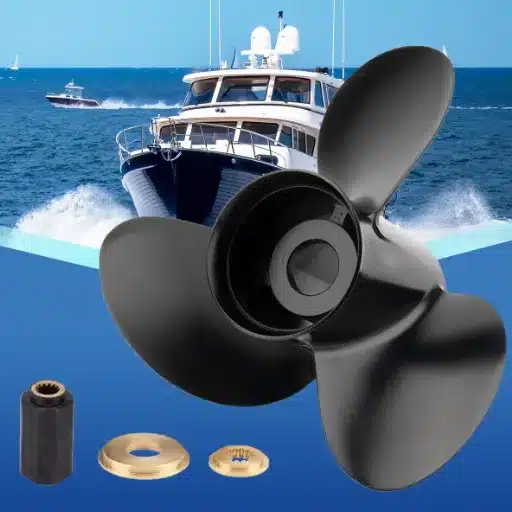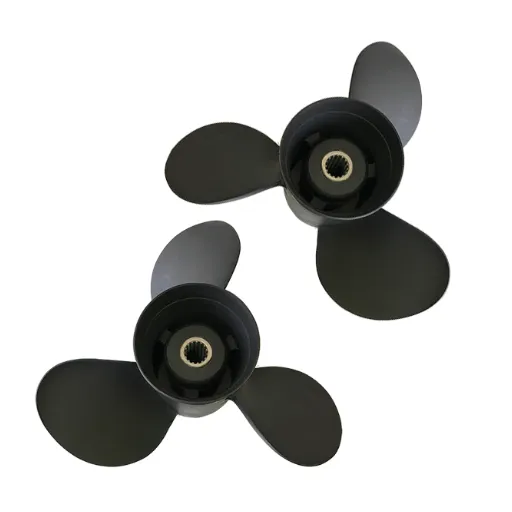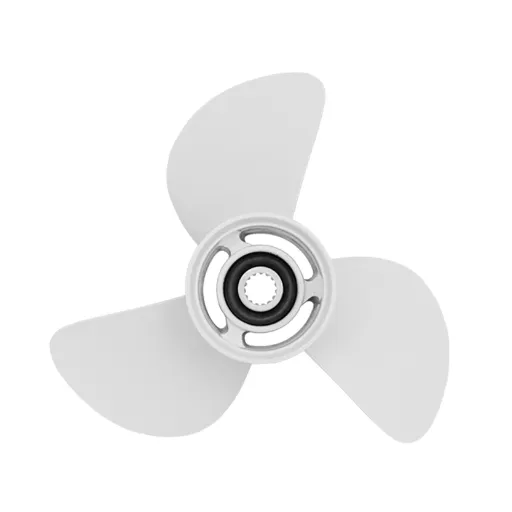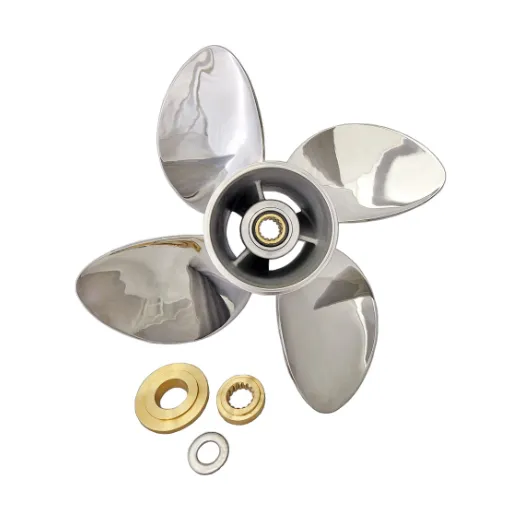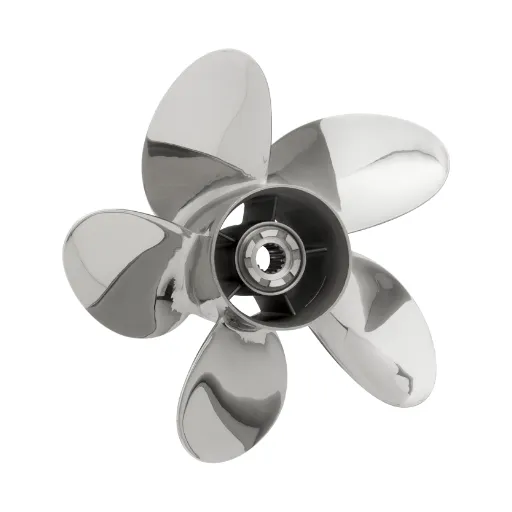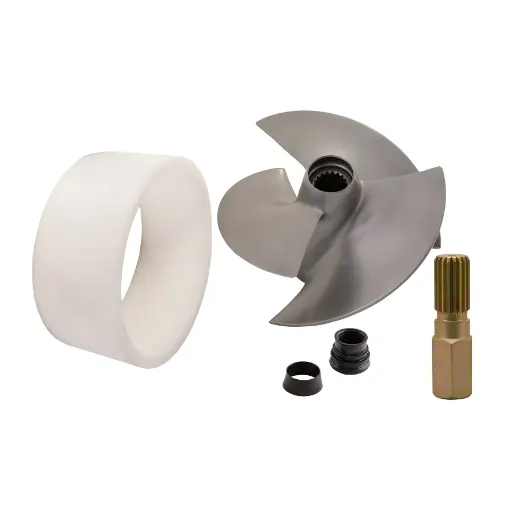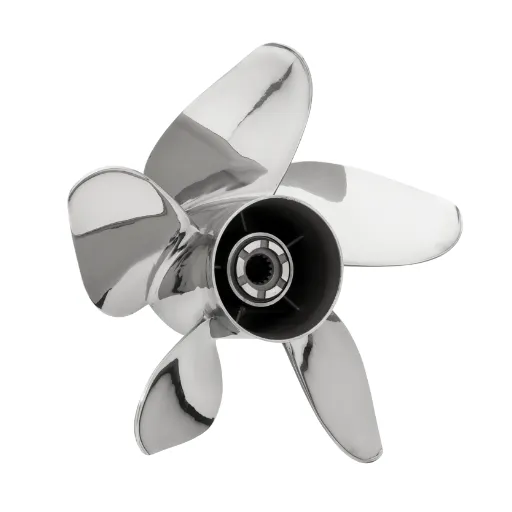Boating can be an adrenaline rush and pure enjoyment, perfect for recharging one’s energies; yet, this experience has a vital side responsibility-the safety of the people in and around the water. One of the most feared accidents every boater must be aware of is when a moving boat propeller hits a swimmer. Entering 2025 has brought new technology, and with it, better safety measures that give us a chance to curb this menace effectively. In this article, we explore the realm of prevention measures, devices, and mechanisms that can help prevent such accidents, ensuring you are well-informed for the sake of safety while enjoying the water. Whether you’re out on the water with the wind at your back or just taking a weekend wonder, this information is essential for a smooth and secure time in the water for everyone.
Understanding Boat Propellers and Their Risks
The Mechanics of Boat Propellers
Boat propellers are the fundamental elements that supply thrust to move vessels through water. They are usually made of stainless steel or aluminum to ensure strength and efficiency. The propeller converts rotational power from the engine into thrust, causing it to press and pull on the water between its blades. Propellers are generally characterized by size, number of blades, pitch, and direction of rotation; each of these aspects contributes to the performance, speed, and fuel efficiency of the boat. Several nuisances can reduce the working ability and life span of a propeller, including cavitation, debris, and improper maintenance; therefore, boat operators must inspect and verify their propellers regularly. Recent improvements have also introduced new issues, such as four-blade props and computer design for enhanced performance and reduced hazards during operation.
Common Causes of Propeller Strikes
Being a cause of serious safety hazards in boating, it is primarily a combination of human errors, environmental factors, and technical issues. One of the most common causes is operator inattention or distraction, which prevents them from noticing a person or persons in the water near a boat. Props strikes are also more likely to occur when vessels are traveling at high speeds in congested or shallow waters, where operators may struggle to bring the boat to a halt or regain control quickly. Weathering conditions, such as fog or a downpour, could also hinder visibility, thus contributing to propeller strikes. It is also risky for swimmers, divers, or those in potential danger when falling overboard if they remain unnoticed by the boat operator. From another perspective, if such circumstances are exacerbated by mechanical faults, such as control malfunctions or the absence of safety devices like propeller guards, this serves only to underscore the paramount importance of adhering to regular maintenance and safety protocols. Education, vigilance, and, toward this end, enhanced protection must become paramount in the effort to reduce these instances and provide safe passage for all waterway users.
Swimmers Need Attention: Safety Issues
Almost everyone agrees that swimmers’ safety in and around waterways depends on awareness and preventive measures. As such, boatmen, operators of watercraft, and shoreline visitors must stay very alert and aware of their surroundings to prevent an accident involving a swimmer. Swimmers are often tricky to spot, especially in a busy or murky area. Invisible collisions may cause accidents or sometimes injuries. Implementing safety restrictions in areas where swimmers and boaters can interact could be beneficial. Keeping swimming zones separate from motorized vessels could significantly reduce the chances of unintentional conflicts, hence making the surrounding area safer.
Modern technologies and equipment can also enhance swimmer safety. Underwater radars, swimmer detection cameras, and sonar systems can be installed on boats and piers to detect the presence of swimmers in real-time. Swimmers should also wear bright yellow, orange, or neon-green hats, as well as inflatable visibility markers and signaling devices, to make them easier to spot in open waters. Further opportunities for protection have been introduced by awareness campaigns that inform the public about safe swimming and also boating etiquette. Investing vigilance, innovation, and education in mitigating the risk will provide a relatively secure and enjoyable experience for all involved.
Best Practices for Safe Boating
Engine Off When a Swimmer is Re-boarding
Critical Safety Rule: More importantly than ensuring the engine is in the off state is the boat’s safety measures for any swimmer re-boarding. This eliminates the hazards of accidents that may result in propeller strikes, which cause injuries and deaths. Propeller-related accidents contribute to a lot of injuries every year, thus stressing the importance of this safety procedure. Another absurdity is that if the engine is running, the boat may suddenly move, causing slips or falls to occur to those climbing aboard. Hence, boaters should always check that the motor is off before aiding anyone reboarding the boat—a well-thought-out and prevention-oriented approach to safety.
Engine to Neutral but Hands Free of Shifter
With the engine running in the neutral gear, the boat has very little or no motion. Hence, it helps to avoid any unfortunate propeller-related accidents. This is especially necessary in congested docks where you work to dock or wait for your swimmers or skiers to return to the boat. You will want to hold the gearshift in case you need to keep the engine in neutral, as you may have to take fast action, such as bringing the boat away from a possible collision or moving it into position in rough water. This approach significantly enhances safety and prevents any lapse of control that could occur if the shifter is left unattended.
Additionally, placing your hand on the shifter remains an essential factor in maintaining safety and vigilance. A delay of just one moment in shifting gears can cause grave consequences, particularly under stress or in unexpected situations. Remaining in a state of high alertness and being prepared to act is how an operator reacts to environmental contingencies. These contingencies include anything from a wave hitting the vessel to a sudden change in weather or an unexpected watercraft approaching the operator’s vessel. The formation of this habit in operators enables the development of a mental state of preparedness and responsibility, which is central to safe boating. Operators can also regularly inspect their engines, combined with the use of equipment according to guidelines, to ensure their watercraft is in excellent working condition.
Keeping a Safe Distance from Swimmers
First and foremost, a responsible boat operator never infringes on the safety zone of swimmers. Operating dangerously close to swimming areas entails grave safety risks. Swimmers could very well be injured or even killed by collisions, propeller injuries, or heavy wakes. It is a good practice to maintain a distance of at least 200 feet from a marked swimming area, dock, or any area where people are likely to be in the water. This way, both boat and swimmers have sufficient space to avoid any untoward interference. Following this practice safeguards both the defenders and fosters a safer and more pleasant environment for all.
Swimming-zone awareness ensures that buffer safety is maintained. Swimming zones are usually buoyed or signed to indicate that no-boating areas exist to protect swimmers. Boaters should study local regulations and area waterway layouts whenever laying out. Finally, slowing down and watching out for the rare sudden swimmer outside of marked zones will drastically reduce the possibility of such an accident. This, along with all other safety measures followed by the boatman, will protect the boatman and swimmers, thus creating a space that is respected and enjoyed by everybody.
Ways to Prevent Striking a Swimmer
Instructing Swimmers to Wear Bright Colors
One straightforward yet effective way to prevent accidents on the water is to ensure that swimmers wear bright colors that are easily identifiable. Colors such as neon orange, yellow, and lime green should pop enough against the natural hues of the water, helping those looking from afar to keep an eye on the swimmer. This is especially pertinent when the lighting is low, during dull or overcast days and when there could be the sun’s glare coming off the water surface. Brightly colored swimsuits, swimming caps, or even waterproof accessories used by swimmers aid operators of boats or watercraft in spotting the swimmers faster, thus minimizing the chances of collisions.
Research into water safety has shown that visibility is a crucial factor in preventing accidents. A turbulent, choppy water surface makes it difficult for swim detection, especially if the swimmer’s attire tends to blend in with the water colors, such as dark blue or black. On the other hand, bright colors seem to make it easier for lifeguards, fellow swimmers, and boaters to spot a swimmer. Some companies take it a notch further and create swimwear or gear with reflective qualities to maximize visibility, especially during sunrise or sunset.
The wearing of bright-colored swimwear can be paired with public awareness campaigns or safety training. Through these promotional activities, which highlight visibility, one can collaborate with safety groups to distribute visibility aids, such as safety gear that enhances the impetus for safety in water recreation activities. This would foster a safety-conscious culture that creates a mutually agreeable environment for everyone to enjoy simultaneously, jointly between swim guards and watercraft operators.
Recommended High-Visibility Colors for Swimmers:
- Neon Orange – Most visible against blue water
- Bright Yellow – Excellent for overcast conditions
- Lime Green – High contrast in various lighting
- Reflective Materials – Best for dawn/dusk swimming
Always Turn Away from Swimmers
Preventing the loss of human life requires strict safety measures, especially in areas where boats and swimmers congregate. One of the cardinal rules for boat operators is always to turn away from swimmers when passing near them. Following this rule considerably lowers the risk of accidental collision and/or impact. Close maneuvering of any watercraft near swimmers will create hazardous conditions, including wakes so strong that they can disorient and cause persons in the water to lose control. Hence, boat operators must never approach or continue alongside swimmers; instead, they should always turn away to prevent accidents and save lives.
Moreover, such a practice should be entirely promoted under the strict purview of abiding by established safety codes and general boating guidelines. Some critical considerations in keeping swimmers safe include maintaining a safe speed, being aware of designated swimming areas, and adhering to no-wake zone rules. Injuries or fatalities can occur by accidental circumstances as a result of careless driving, lapses in observation, and disregarding these crucial rules. Boat operators must be trained to estimate movements in the water so that they can maintain a considerable distance away from swimmers at all times. Making this effort will help enhance the safety of the water environment for the benefit of recreational users.
Communication and education play an equally important role in promoting the propagation of the practice. Local authorities or recreational organizations can conduct awareness campaigns to encourage boat operators and swimmers to remain vigilant. Signage near swimming spots, along with discussions about suitable water safety procedures and the importance of turning away from swimmers, can lead to these efforts. All of these more cooperative approaches, in conjunction with the efforts underlying, lay down the framework under which the regulatory mechanisms may operate toward safer interactions between boats and people in the water.
Using Technology for Safety Enhancement
In my opinion, leveraging modern technology is a crucial step that must be taken to ensure safety in aquatic environments. For instance, advancements in GPS tracking and real-time alerts have become essential in preventing accidents involving swimmers and boat operators. Many of today’s watercraft are currently equipped with GPS technology that maps areas with high swimming activity, alerting operators to avoid such places. There are also types of wearable technology for swimmers that provide live location tracking, allowing the swimmer to be easily located when needed, and significantly enhancing the rescue process during emergencies.
Drone technology, beyond its use as a personal gadget, has found other applications in monitoring safety considerations. For example, the drones can fly over a busy beach or waterway and identify potential threats arising from overcrowded zones, dangerously strong currents, or stray watercraft within cordoned swimming zones. Once detected, this information can be swiftly conveyed to the rescue teams or authorities, allowing for intervention before any catastrophe occurs. A few organizations have recently been examining the use of artificial intelligence in predictive modeling of weather and water conditions, which can then issue warnings whenever a risk is identified.
By integrating these technologies into day-to-day protocols for water safety, we can create a more proactive approach to safeguarding people. Along with awareness and clear guidelines for water safety measures, technological intervention may prove beneficial in reinforcing the collective effort to make aquatic environments safer for everyone.
Case Studies and Data on Propeller Strikes
Analysis of Recent Propeller Strike Accidents
Key Finding: Recent propeller strike accident reports have highlighted the growing importance of safety arrangements in aquatic environments. According to data from recent case studies, accidents often occur in crowded recreational areas, thus limiting visibility and situational awareness. For instance, a major chunk of accidents involves smaller boats, in which occupants fall overboard unexpectedly, thereby increasing the chance of becoming propeller strike victims.
Another point of analysis identifies the absence of proper safety measures, such as adequate propeller guards, as a contributing factor to more serious injuries. Compounding the risk are factors such as the operators’ lack of experience and their failure to observe accepted safety rules. Statistics indicate that children and new swimmers are mostly affected by these incidents, and as a result, they need effective measures to prevent these accidents.
By observing these trends, it appears that the implementation of advanced safety technologies, creating mass awareness, and enforcing stricter regulations will prove to be deterrents to hazards caused by propeller accidents. Some of the key countermeasures include mandating the use of propeller guards, providing better training for boat operators, and ensuring that safety guidelines are clearly communicated in known high-risk areas.
Effects of Boating Courses on Accident Reduction
Such boating safety classes are considered essential in reducing injuries and accidents that may occur on the water. These courses give imperative safety tips to the boat operators that include the rules of navigation, hazard recognition, or procedures in emergencies. In their studies, national safety authorities have revealed that an accident is far less likely to occur to an individual who has studied safety courses with no formal training than to an individual without formal training. This is mainly due to the heightened awareness, skill building, and confidence that are instilled through formal training. Usually, the courses also emphasize the need for being prepared, and being ready encompasses everything from knowing what to carry as safety gear to being able to interpret weather conditions that could impact your current boating situation.
According to data, states that have made boating safety courses mandatory report low rates of accidents and deaths. This success indicates that these programs are effective in ensuring safer waterways. These are often hands-on activities, such as operating a vessel, practicing docking skills, or assessing emergency procedures for a capping boat or an overboard incident. This program equips boaters with the knowledge they need to act decisively and safely in life-threatening situations, thereby preventing injuries and saving lives. From an outreach perspective, combining awareness campaigns with the promotion of such courses enables broader coverage, ensuring a greater number of individuals adopt these safety practices and, thus, driving the culture of responsibility within the boating community.
Swimmer Safety Statistics in 2025
2025 Safety Improvements:
- 12% decrease in worldwide drowning accounts from the previous year
- 78% of recreational swimmers follow safety recommendations consistently
- 15% increase in professional lifeguards at beaches and public pools
The life safety of swimmers must remain a priority, with advancements anticipated as late as 2025, driven by increased awareness and preventive efforts. Reports suggest that worldwide drowning accounts have decreased by 12% from the previous year, representing positive trends in the promotion of water safety awareness and implementation. Out of all recreational swimmers surveyed, 78% said that they always follow safety recommendations, including the use of personal floatation devices and swimming only in safe areas. In the meantime, lifeguard presence has been expanded, with a 15% rise in professional lifeguards working on beaches and public pools. Other measures aside, some underserved areas still lack access to swimming training programs; thus, a more significant push toward accessibility and education can go a long way in helping to avert water-related risks.
Future Trends in Boating Safety
Advances in Boat Propeller Design
It becomes clear from my research that innovations in boat propeller design are making significant contributions to improvements in safety and performance. Among these developments, one of the most noteworthy is the use of composite materials that are lighter and stronger than metal propellers. These advanced materials further contribute to fuel efficiency by reducing drag and also pose a lower risk in the event of accidental contact, as they limit injury severity. Moreover, there is an increasing effort being made to develop quieter props, which in turn reduces noise pollution and enhances the boating experience for both the user and the marine environment.
Another significant advance is innovative propeller technology. Embedded sensors in the propeller or within the onboard system monitor the propeller’s performance in real-time and adapt to changes in speed, depth, current, and other factors. With this information, they serve to improve efficiency and safety by supplying the operator with essential data upon which decisions can be based. For example, some systems incorporate warnings for possible obstructions or mechanical failures that could lead to an accident.
In general, the future of the designer boat propeller is increasingly moving toward the fusion of high technology, improvements in performance, and environmentally friendly materials. In so doing, these instigations make the propellers more in tune with modern watercraft demands that ensure environmental sustainability and user safety. It is exciting to see how the sports industry will be impacted in the coming years due to these inventions.
Emerging Technologies for Swimmer Detection
The emerging technologies for swimmer detection include cutting-edge advancements that shall enhance safety in marine environments. AI-based detectors are one such leading innovation. Detection systems using AI cameras and sensors look for human shapes or movement in the water. By training algorithms with a comprehensive dataset, these technologies slowly become more capable of distinguishing swimmers from other objects, such as marine animals or debris, thereby substantially minimizing false alarms.
Modern underwater sonar systems are now being updated to track and identify swimmers near boats or in designated swimming zones. The systems operate well under low-visibility situations, such as murky water or darkness, thereby making the whole procedure reliable in an environment where visual methods might fail. The sonar detector is usually coupled with an onboard warning system that immediately alerts a captain or operator whenever a swimmer is detected nearby.
Furthermore, wearable technology and innovative communication systems help ensure the safety of the swimmers. With the courtesy of waterproof GPS trackers and wristbands, a swimmer can broadcast their location in real-time to monitoring stations or directly on a connected smartphone application, which acts as an essential safety factor for lifeguards and boat operators in times of emergency, allowing them to intervene and safeguard a life quickly. In this way, considering all these phases, it is evident how rapidly the component of swimmer detection technology is evolving, with more accurate and effective ways to secure individuals in water.
Emerging Detection Technologies:
- AI-Based Cameras: Distinguish swimmers from marine life and debris
- Underwater Sonar: Effective in low-visibility conditions
- Wearable GPS Trackers: Real-time location broadcasting for swimmers
- Predictive AI: Weather and water condition modeling with risk alerts
Community Initiatives to Promote Safe Boating Practices
As a public member of the community, I believe that one must rely on education, awareness, and resources to practice safe boating. A key initiative would be to have local workshops and training opportunities offered on boating safety. These types of sessions typically cover essential topics related to the proper operation of the vessel, navigation rules, and safety equipment, including life jackets and emergency signaling devices. Since they are interactive and involve hands-on applications, participants build self-confidence before hitting the water.
Another critical approach involves encouraging the development of boating safety programs in schools and community centers. The programs will provide young people with exposure to vital water safety information while emphasizing the importance of respect for waterways and marine life. Often, local community boating clubs and associations promote a safe way of life by offering certification programs, providing safety pamphlets, and fostering a culture of responsibility among their members. Partnering with local governments and organizations is an effective way to continue this work by providing funding or sponsoring events, such as National Safe Boating Week.
Modern technology can also help create a secure environment for boating. Communities may encourage the use of this technology in the form of smartphone apps and websites that deliver real-time weather updates, GPS navigation, and alerts on potential hazards. As a result, the whole community begins to value education, resources, and technology, and their proactive implementation as a foundation for ensuring safety on the water.
Reference Sources
- Boat Propeller Strikes: Prevent Injuries and Accidents – Offers practical tips like turning off the engine and preventing passengers from being thrown overboard.
- How Can Propeller Strike Accidents Be Avoided? – Discusses strategies such as having a designated observer and making slow, controlled maneuvers.
- Propeller Safety – Highlights the importance of warning labels, routine checks, and prevention strategies for safe boating.
- How to Prevent Propeller Strikes – Provides detailed safety measures, including proper passenger seating and engine handling.
- Boat & Propeller Impact Prevention Hints & Tips – Focuses on ensuring the engine is off during boarding and disembarking to avoid accidents.
Frequently Asked Questions (FAQs)
What are the procedures to avoid striking a swimmer with a moving boat propeller?
The number one safeguard against a moving boat propeller striking someone in the water is maintaining a safe distance from the affected people. Boat operators should always turn off the engine whenever people are swimming, ensuring the engine is in neutral, even if later allowing passengers to board or re-board. Always keep a finger on the shifter so you can react quickly if a swimmer suddenly enters the boat’s path. Using red flags, or any brightly colored signs, may also be helpful in alerting others to the swimmer’s presence.
What can a boat operator do when a swimmer enters unexpectedly?
If, for some reason, a swimmer should go into the water, the boat operator should immediately shift into neutral, though they should keep their hand on the shifter. This could enable quick reactions to back down or steer away from the swimmer. It is essential to keep a close lookout for divers and swimmers, especially in crowded waters. Operators should also slow down to avoid hitting swimmers and keep the area safer for everyone.
What is done when passengers are either embarking or disembarking from a boat?
When the boat is in the process of passengers boarding or disembarking, or changing position, the engine should be kept in neutral. Additionally, from a safety perspective, swimmers should be advised to stay away from the vicinity of the boat. The boat operator should also be firm on communicating safety rules to the passengers, with particular regard to hazards around the propeller, so that everyone is aware of them. It may prove helpful to ask the swimmers to stay away from the boat while the other passengers are boarding. Additionally, visually checking the water for swimmers before starting the engine may reduce the risk of propeller accidents.
What Safe Precautions prevent a propeller strike accident?
A few preventive approaches to avoiding propeller strikes include being alert to one’s surroundings and considering the presence of divers or swimmers in the water. Always ensure the operator maintains a considerable safe distance and never drives the boat into an area where it is known that people are swimming. Passengers must also be educated on dangers and constantly communicate safety practices to one another. Making use of authorized swimming areas and observing local boating regulations should also help eliminate the possibility.
How does setting in neutral help prevent the occurrence of an accident?
The engine in the neutral position prevents a boat from moving ahead if someone gets into the water, thus ensuring the safety of the people in the water. It provides the operator with the ability to react quickly if the need arises when boarding and disembarking, with the engine in the neutral position, the risk of propeller accidents is also lessened. While passengers are boarding and disembarking the boat, this also protects swimmers from having to worry about propeller blades moving by and hitting them.
Why is it important to stay away from swimmers?
Speeding away from swimmers also helps to minimize any possible incidents involving injuries caused by boat propellers. If swimmers and boaters happen to be together so close to each other at high speed, the chances of propeller strikes increase drastically. Hence, when approaching persons in water, a boat is required to slow down at all times and exercise caution regarding its movement to avoid increasing any hazards. The safest condition for all concerned persons would be to keep the engine turned off or, at the very least, put it in neutral when approaching and departing near swimmers, as this creates possibilities for injuries rather than preventing them.




